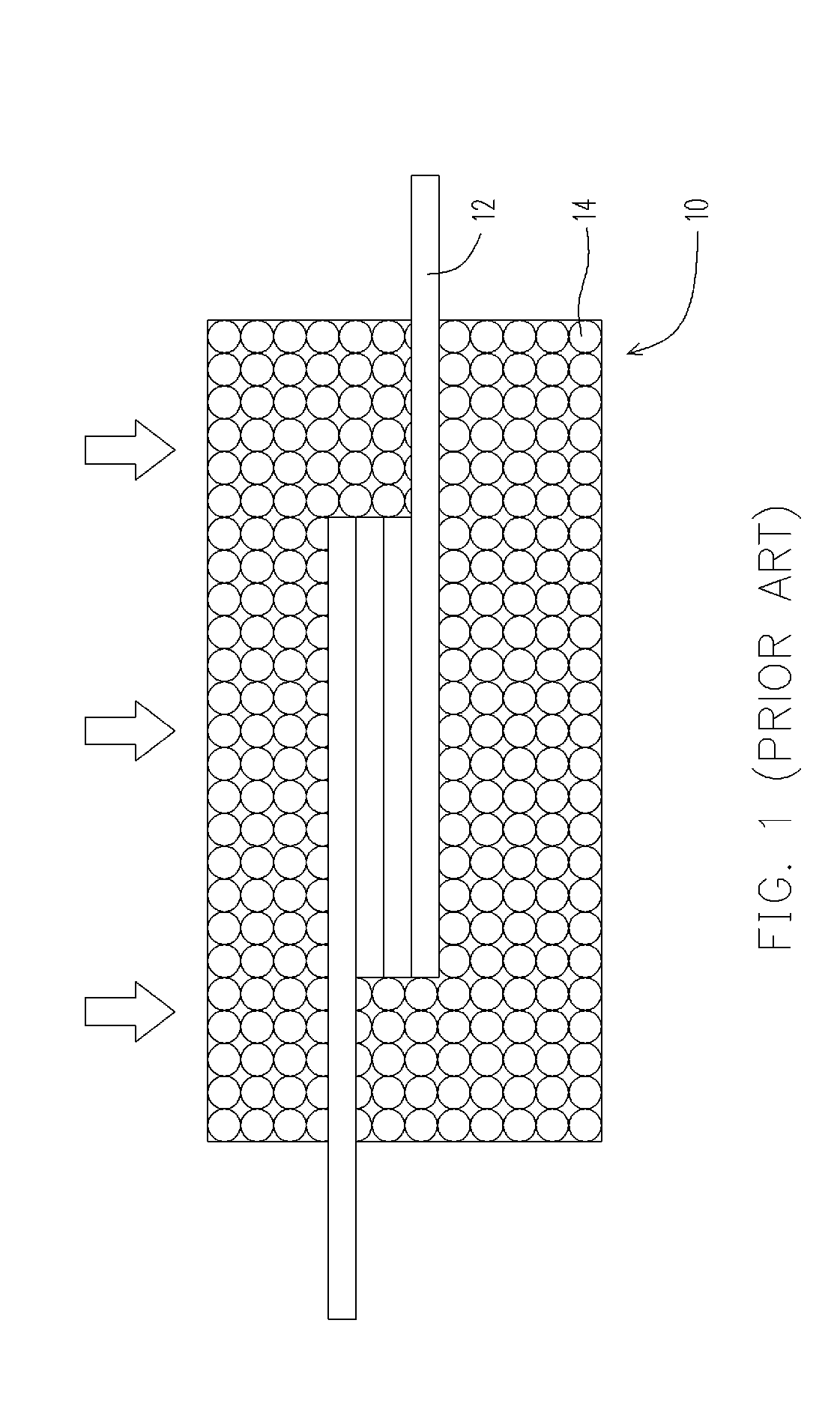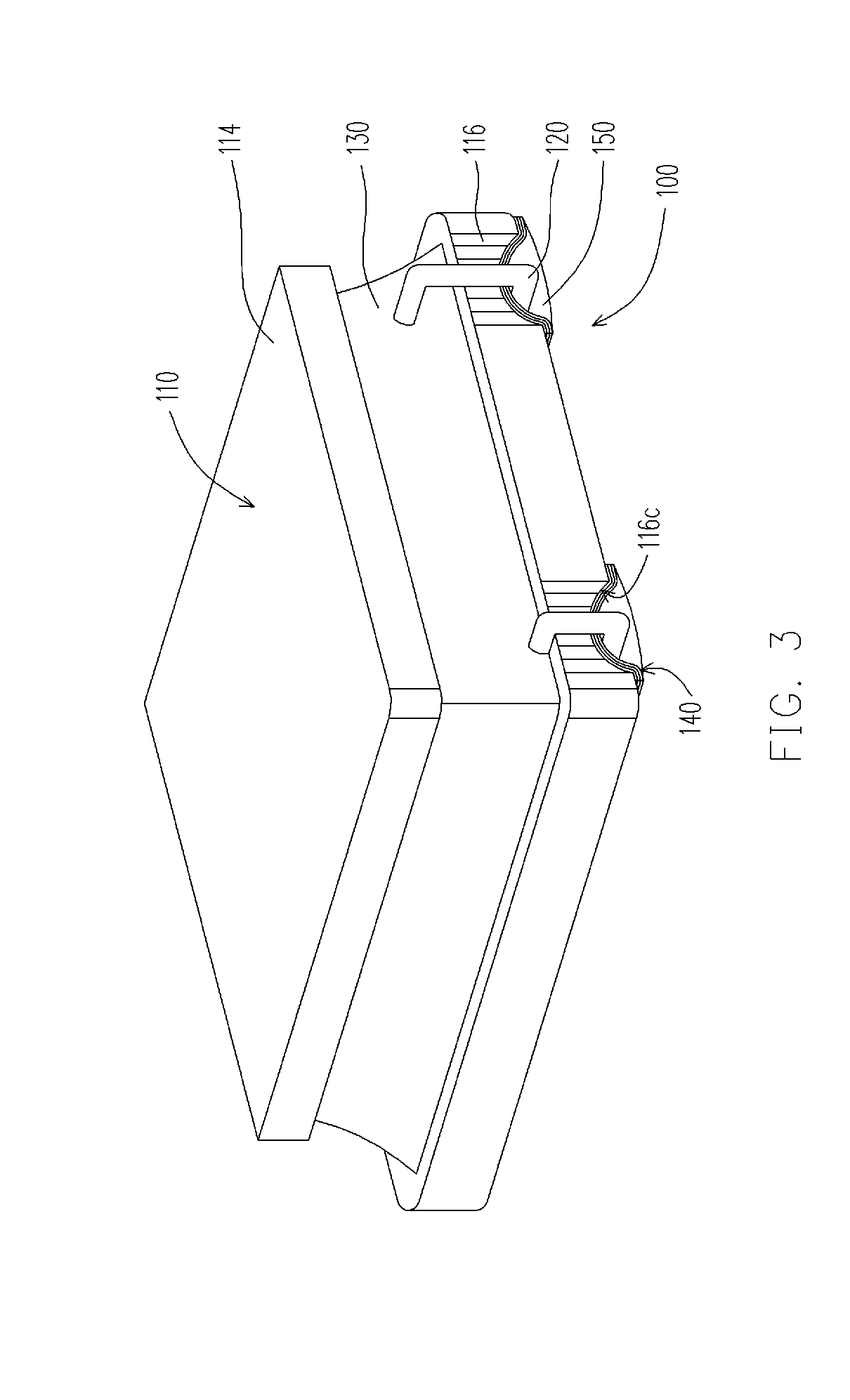Choke
- Summary
- Abstract
- Description
- Claims
- Application Information
AI Technical Summary
Benefits of technology
Problems solved by technology
Method used
Image
Examples
Embodiment Construction
[0052]In the embodiment of the invention, an electronic device including a core, at least a wire and a magnetic material is provided. The electronic device is a choke, for example. The core includes a pillar, a top board and a bottom board. The pillar is disposed between the top board and the bottom board. An area of the top board is smaller than an area of the bottom board. A winding space is formed among the top board, the bottom board and the pillar. The wire is winded around the pillar and located in the winding space. The magnetic material fills the winding space to encapsulate the wire. The magnetic material includes a resin and a metallic powder, wherein an average particle diameter of the magnetic powder is smaller than 20 μm. The resin includes a thermosetting resin, for example.
[0053]Moreover, the average particle diameter of the magnetic powder is smaller than or equal to 12 μm. In more detail, the average particle diameter of the magnetic powder is smaller than or equal ...
PUM
 Login to View More
Login to View More Abstract
Description
Claims
Application Information
 Login to View More
Login to View More - R&D
- Intellectual Property
- Life Sciences
- Materials
- Tech Scout
- Unparalleled Data Quality
- Higher Quality Content
- 60% Fewer Hallucinations
Browse by: Latest US Patents, China's latest patents, Technical Efficacy Thesaurus, Application Domain, Technology Topic, Popular Technical Reports.
© 2025 PatSnap. All rights reserved.Legal|Privacy policy|Modern Slavery Act Transparency Statement|Sitemap|About US| Contact US: help@patsnap.com



